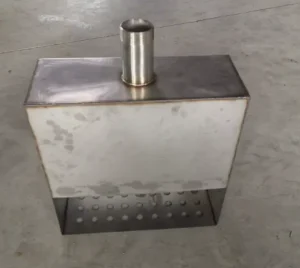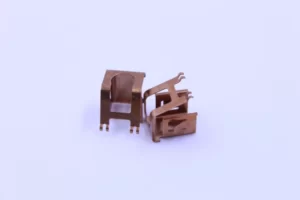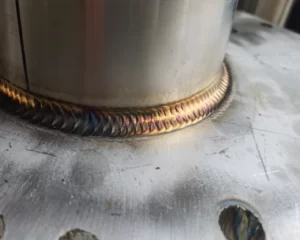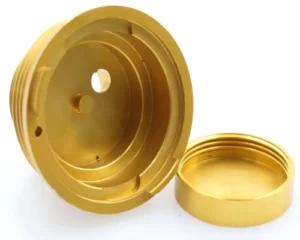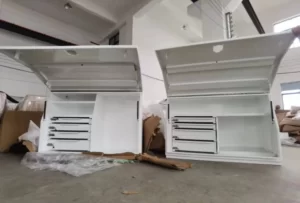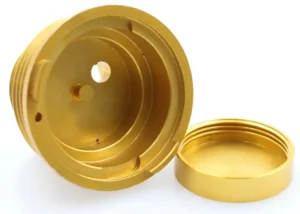Contract manufacturing
Sheet Metal Bending Services
The sheet metal bending process creates solid sheet metal parts from sheet metal.
such as design, batch manufacturing, rapid prototyping, surface treatment, assembly and testing.
1 Pcs Order of Prototype
200K Mass manufacturing
Delivery in as fast as 3 days
Sheet Metal Bending Services
Sheet metal bending is one of the most common sheet metal fabrication processes, which can quickly transform sheet metal into products with twists and angles.
By applying pressure on the surface of the material, after the yield strength of the metal sheet is exceeded, the metal sheet can be plastically deformed, and shapes with different radii and angles can be created according to different product designs.
Compared with other China sheet metal fabrication, Supro MFG reduces manufacturing costs by improving production efficiency and strict quality control. With rich manufacturing experience, we provide economic solutions for various complex sheet metal bending products.
We are proud of our short delivery time and fast turnaround sheet metal bending services, ensuring that large quantities of high-quality sheet metal bending products or rapid sheet metal bending prototypes are delivered on time.
Please contact the expert team of Supro MFG to get the most competitive quotation and manufacturability report within a few hours.
Custom Sheet Metal Bending Project Gallery
Regardless of the material or structural design, the sheet metal bending serivces can transform a single metal plate into a three-dimensional finished part. Beautiful, light and economical.
stainless steel bending parts
aluminum alloy bending parts
Why Choose Supro MFG
As an advanced China sheet metal bending manufacturer, it has a wealth of professional knowledge, technology and advanced equipment. We understand the needs and standards of sheet metal folding parts in every industry, from agriculture, defense, medical, and automobile manufacturing.
Supro MFG has 12 different sheet metal bending equipment, and is proud to provide one-stop sheet metal bending services for any industry, while providing high-quality products, fast turnaround customer service and on-time delivery.
If you have any questions or concerns about our customized sheet metal bending service, please contact our sales team, we will actively meet your demanding requirements for the project.
Supro MFG is your reliable partner for high-quality precision metal bending.

sheet metal bending services
Professional Contract Manutacturing Services

CNC/Turret Punching services
At Supro MFG, we use cnc punching services to process large-area holes, embossing and other parts design. This is a process very suitable for large-scale production, achieving rapid turnover and economic benefits.
No need to cooperate with stamping dies, suitable for rapid prototyping or small batch operation of complex parts. Compared with plane laser cutting and metal stamping, CNC punching services have some unique capabilities and advantages.
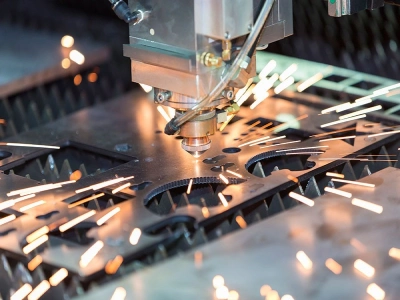
Laser cutting services
We have advanced 10.000kw industrial-grade laser cutting equipment, which handles fine engraving and cutting details on the metal sheet metal, and can cut stainless steel plates within 30mm at the maximum. The flat cut cross section can reduce the cost of secondary processing.
And to achieve a precision tolerance of ±0.05mm, more than 80 kinds of metal plate materials can be selected.
At Supro MFG, we can ship semi-finished products after laser cutting on the same day.
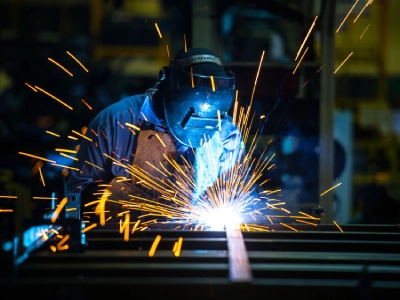
Welding fabrication services
Metal welding is an indispensable process for manufacturing parts of sheet metal. The metal is spliced and assembled at high temperature and will maintain high strength after cooling.
Metal welding is classified according to different media: gas flame, electric arc, laser, electron beam, friction and ultrasonic. It is widely used in the welding of various metal materials.
At SUPRO MFG, we use advanced welding robots for fully automated welding work.
sheet metal bending services
Sheet metal bending material solutions
Supro MFG offers a robust stockpile of materials to help your sheet metal bending parts can get up and running with a quick turnaround.
Within an hour, the metal material is ready for the sheet metal bending services.
Aluminum Alloy
stainless steel
Copper
steel
Other
1060
6061-T6 / T5
6063
5052-O
5083
5754
7075
2A12
201
303
304
316
316L
420
430
440
H62
H65
H68
H90
C10100
C11000
C12000
C51100
Q235 - F
Q255
16Mn
12CrMo
# 45
20 G
Corrugated Steel Sheets
Fluorocarbon color steel
Embossed panels
Galvanized sheet
0.6mm - 200mm
1220mm * 2440mm
Custom roll & Strips
0.05mm - 300mm
1220mm * 2440mm
Custom roll & Strips
0.5mm - 6mm
1200mm * 4000mm
Custom roll & Strips
0.5mm - 500mm
1500mm * 6000mm
Custom roll & Strips
- Laser Cutting
- Wire cutting
- CNC Machining
- bending
- stamping
- deep drawing
- welding fabrication
- Anodizing
- Painting
- Powder Coating
- More Customized Solutions
sheet metal bending parts surface treatment
Reasonable surface treatment of metal parts can improve the durability, corrosion resistance, heat resistance, electrical conductivity and appearance decoration of the material.
- Mirror polishing
- Wire drawing
- Galvanizing
- Anodizing
- Black oxide coating
- Chrome plating
- Electroplating
- Powder coating
- Sandblasting
- Laser engraving
- Printing
An Overview for :
What is sheet metal bending processing
Precision sheet metal bending is a three-dimensional product created by applying pressure on a metal plate, which exceeds the yield strength of the metal plate itself and deforms it into an angular shape.
This is a very common sheet metal forming process, and it has also become sheet metal folding, making it an economical sheet metal fabrication method.
According to different bending methods, it is divided into: V-Bending, Air Bending, U-Bending, Step Bending, Roll Bending, Rotary Bending, etc.
- What are the common methods of bending?
- How to reduce the impact of rebound on the product?
- How to calculate the K factor?
- How to reasonably calculate the margin of the metal plate。
We edited an article about sheet metal bending, which elaborated on a variety of technical skills and issues to help you design a product with strong manufacturability.
Sheet metal bending, also known as sheet metal folding, is a process of plastically deforming metal sheet metal to form an expected three-dimensional product shape after a series of processing processes such as cutting, bending, stamping, folding, and welding. This is one of the most cost-effective cold working methods.
Converting 3D or CAD product model files into numerical control codes can accurately control the bending line and angle of the metal plate. Sheet metal bending parts are widely used in various industries due to their excellent durability and fast manufacturing cycle. Whether it is small batch prototype or mass production, it is cost-effective.
The selection and design of material thickness should be kept uniform, follow the design requirements and tolerance standards, increase the manufacturability of sheet metal items, and ensure that the product quality is not affected by the design.
Proper sheet metal products design is a very important part of the sheet metal manufacturing process and directly affects the smooth running of the sheet metal manufacturing process.
Supro MFG is the leading sheet metal fabrication company of china, we provide free professional product design service to help buyers quickly improve and test the product design before mass production.
We provide free professional product design services to help buyers quickly improve and test the rationality of product designs before mass production, and submit professional manufacturability reports, and clarify material types, sheet metal fabrication processes, testing guidelines, and packaging methods.
The setting of the bending line is used to determine the position and shape of the sheet metal part in the bending process. A reasonable bending line design is a very important manufacturing basis. The creation of a three-dimensional product requires key points such as bending lines and bending angles. Factors, you can also adjust the position of the bend line, such as:
- The material is bent on the other side of the bend line.
- The material is bent up to the bend line.
- The material is bent on both sides of the bend line.
When the sheet metal is bent, the bending transition between the two bending lines is called the bending radius. Usually, the bending radius should be designed with reference to the material thickness. It must be at least 1 time the material thickness to prevent the material from cracking and deforming, especially when When the material thickness is large, there should not be a small bending radius, which will test the yield strength of the material, make the sheet metal bending angle become inaccurate, and even cause serious fracture of the material. Sheet metal bending bending radius will be divided into:
- inner bending radius.
- outer bending radius
The distance between the hole and the bend should be at least 2 times the thickness of the material to prevent the hole from being pulled and deformed with the appearance of the bending radius during the sheet metal bending process.
Relief cuts are essential in avoiding bulging and tearing at bends. The width of the relief cuts should at least be equal to the material thickness, and the length should be longer than the radius of the bend.
Different factors are involved in creating the right bend in a workpiece. These include:
- Bending strength of the material
- Degree of bending
- Thickness of the workpiece
- Bend angle
- Internal radius
- Vee die opening
- Minimum internal edge
FAQ
about sheet metal bending services
Metal bending is the process by which metal can be deformed when a force is applied to an object, which causes it to bend at an angle and form the desired shape, which usually results in a "V" or "U" shape.
Mulan MFG will analyze and select the most reasonable sheet metal bending method according to the customer's product requirements and design principles.
- Air bending is the most widely used type of metal bending, and this technique has many advantages. Using two upper and lower bending molds to force the material into the lower mold of the V-notch, the weight required for bending is much smaller, but it is not precise enough.
- Bottom bend
The difference between air bend and bottom bend is the radius between the two. The metal plate is pressed by the mold to form the same angle as the mold. Bottom bending has many advantages, such as higher accuracy when using tools and less springback, which makes it a safer choice when considering metal bending techniques. - Imprint
Imprinting is the bending process of the punch and the bottom of the workpiece on the mold. This produces a controlled angle, which results in little rebound. Compared with air bending and bottom bending, this type of bending requires more tonnage, about 5-40 times that of air bending, but can create better accuracy. To - Rotating bend
This bending method is usually used to create products with a long circular arc. The mold has a rotatable cylinder design. When the metal plate is pressed into the mold, the mold will rotate with the applied pressure to create a set The curvature of the arc. It can form sheet metal bending parts close to 360° at most.
- Wiping bending
Clamp the plane on one side of the metal plate, and the mold presses the metal plate from the outside. After moving up and down, the metal plate is forced to fit the fixed end mold. This process is a bit like cutting metal, but the sleek mold setting can also cause The metal plate was scratched and showed signs.
Due to the external pressure applied to the metal plate, it deforms into the set state, but the internal stress of the metal material will not be eliminated. When the sheet metal folding reaches a certain angle, the stretched material will be withdrawn with the mold. While decompression, rebound occurs, which affects the overall size of the product.
The mechanical properties and yield strength of metal materials are an important basis for our selection, so sheet metal manufacturer will over-set the bending angle according to the design of the product.
When the sheet metal is bent into a new shape, it will naturally rebound to a certain extent after the bending force is removed. This is called "rebound".
Rebound occurs due to the compressive strength of the bent metal plate. When a sheet metal is bent, one side of it is stretched and stretched, while the other side is compressed; however, since the compressive strength of the material is higher than the tensile strength, when the external force is removed, the compressive side succeeds The ground resists deformation and decompresses itself.
Springback is not a major issue, but it means that manufacturers must compensate for the expected springback by excessively bending the sheet metal. If the metal is intentionally bent slightly too much, a small amount of natural rebound will result in the correct angle.
Of course, calculating rebound is far from simple. There are many variables that affect the severity of rebound, including the type and specification of materials. In addition, a larger inner radius will result in greater springback.
When a metal plate is bent, the side outside the bend will be stretched, so its size will change. This means that, for example, the total length of the two legs of the V-shaped bend will be longer than the original length of the sheet.
So if the size changes, how do we accurately design a part to ensure that it fits together with other components? How do we decide how long the flat metal sheet must be? In order to compensate for the change in size, we must consider the bending allowance: the difference between the length of the unfolded plate and the sum of the length of each leg of the finished bending part.
The bending allowance calculation takes into account factors such as sheet metal thickness, bending radius and bending angle. You can use the bending allowance calculator to calculate the required bending allowance for sheet metal parts.
Some sheet metal materials are more suitable for bending than others. Generally, the best bending materials are ductile and not brittle.
Popular sheet metal bending materials include:
- Low carbon steel: can be bent at any temperature.
- Spring steel: It can be bent after annealing.
- Alloy steel 4140: It can be bent after annealing.
- Aluminum 5052: Compared with other aluminum alloys, it has a high degree of flexibility.
- Copper: highly flexible.
- Materials that are more difficult (though not impossible) to bend include 6061 aluminum, titanium, brass, and bronze.
The direction of the grains of the metal plate-the direction in which the tiny crystals of the metal are elongated due to the original rolling of the metal plate-affects how it bends.
The grain direction makes the sheet metal stronger on one axis and weaker on the other. Bending with the texture (longitudinal) increases the possibility of cracking, tearing, or orange peel; bending against the texture reduces the chance of these problems.
However, although bending against the texture can reduce the chance of breakage, it also requires more force because the metal plate is stronger. Therefore, it may cause more rebound, and more compensation is required in this regard.
Sheet metal parts are known for their durability, which makes them ideal for end-use applications (such as chassis). Due to the high initial setup and material costs, parts used for small-batch prototypes and mass production runs are the most cost-effective. To
Since the parts are made of a single piece of metal, the design must maintain a uniform thickness. It is important to follow the design requirements and tolerances to ensure that the part is closer to the design intent and to cut the sheet metal bend line-the straight line on the sheet surface on both sides of the bend to define the end of the horizontal flange and the start of the bend.
Recent Stories
Are you looking for a reliable sheet metal bending manufacturer?
Would you like to receive the assembled Sheet Metal Bending product? Whether it is complex structure, strict standards of products, or a small number of orders.
Supro MFG can be solved smoothly, you do not need to bear any risk, protect your investment security.

